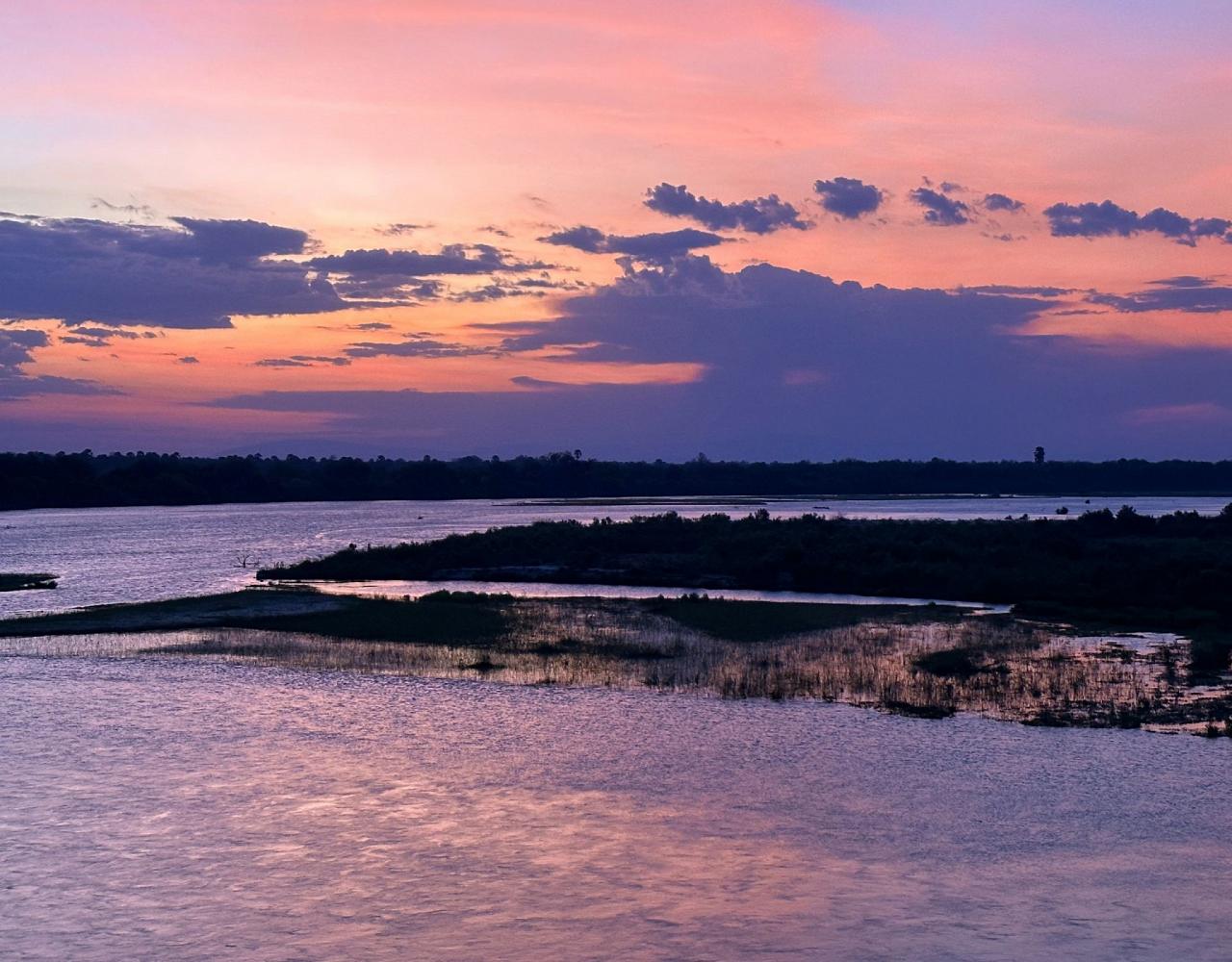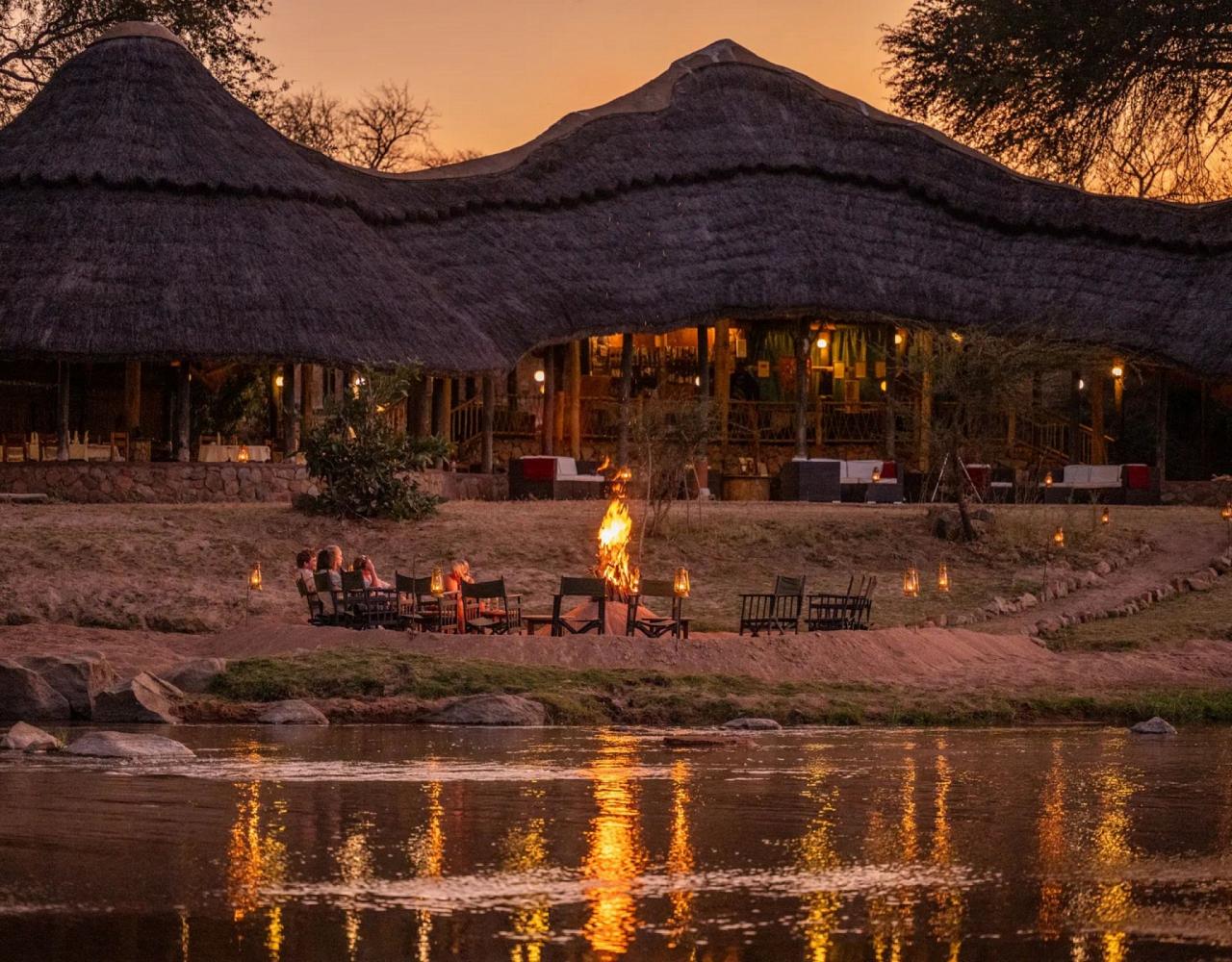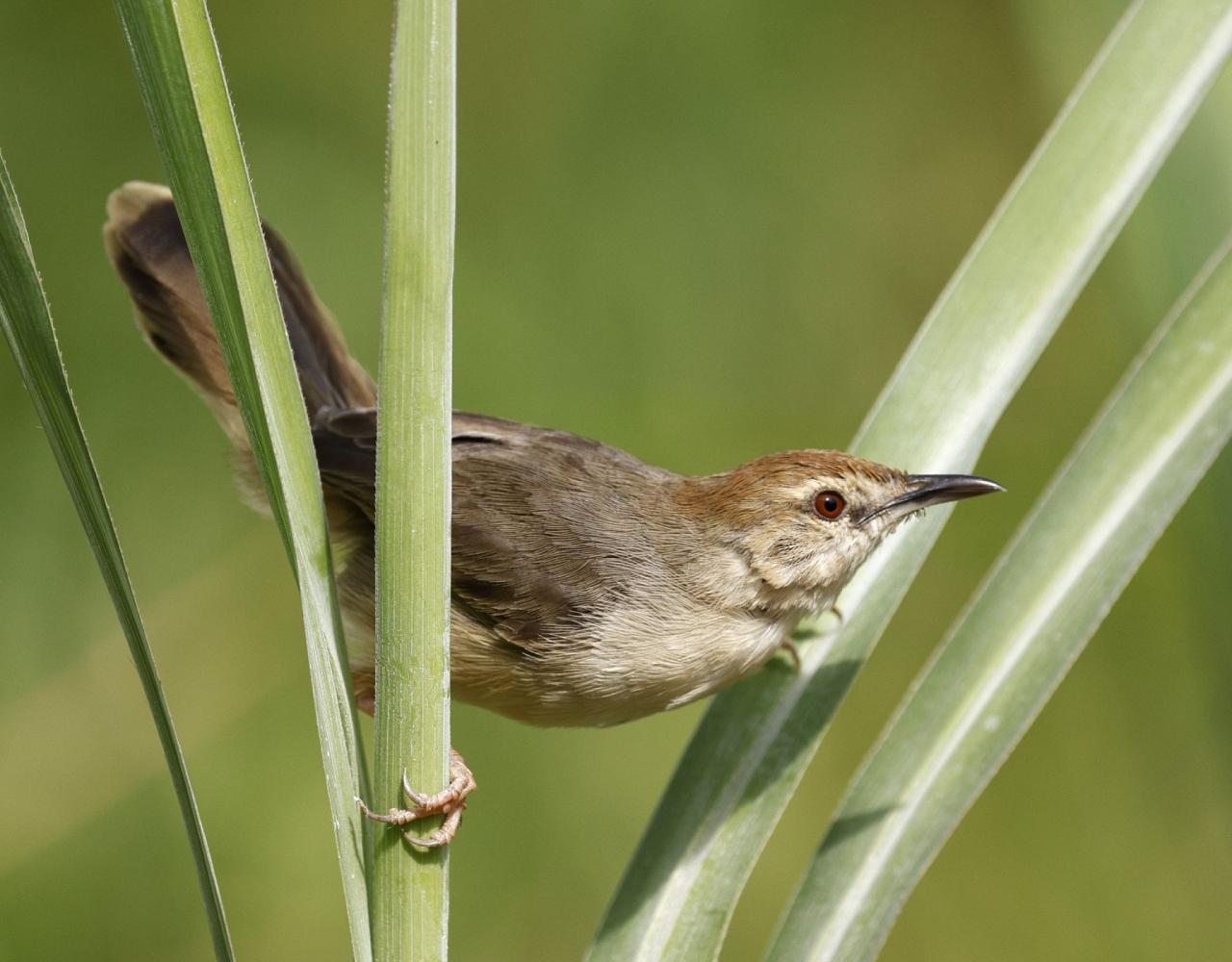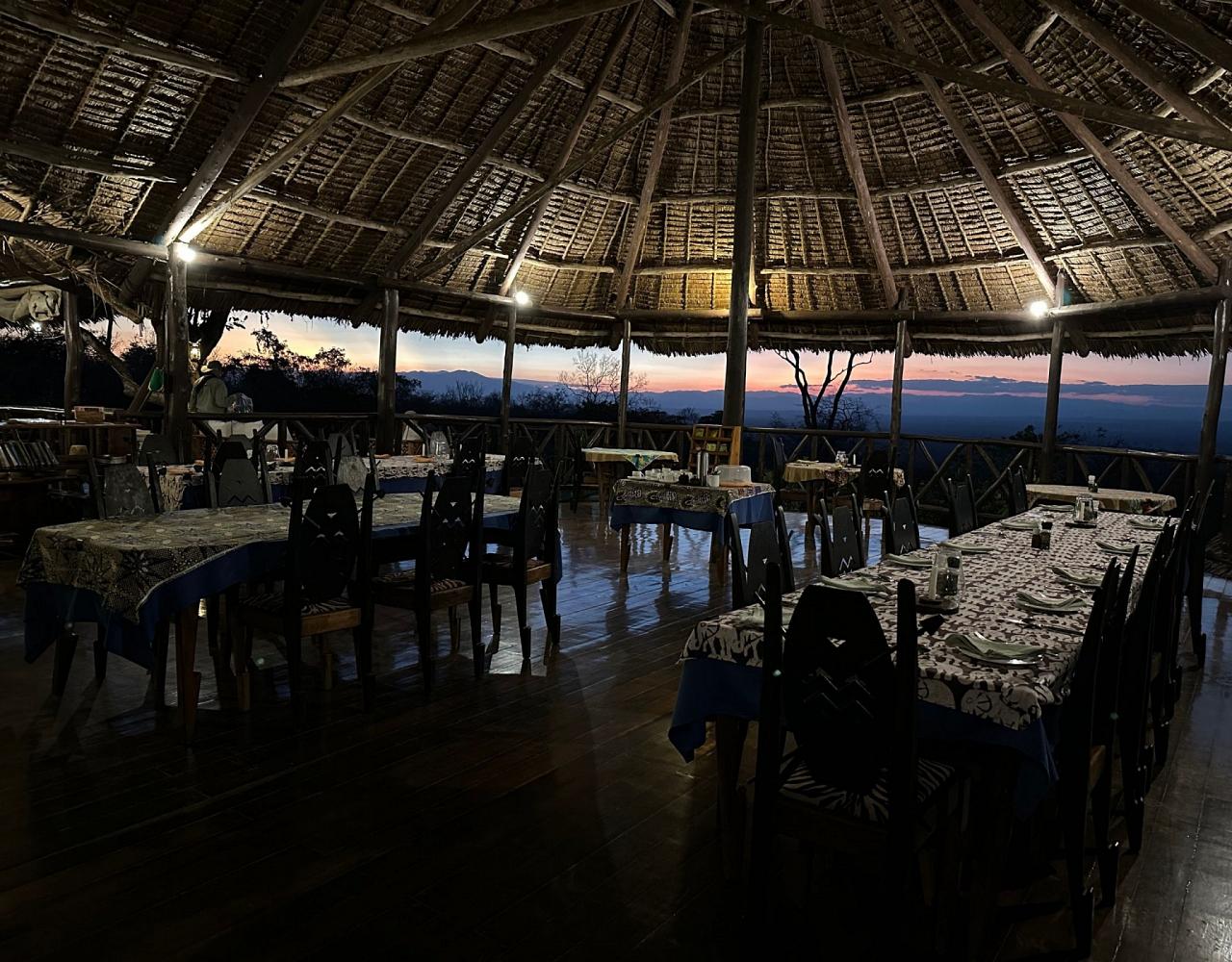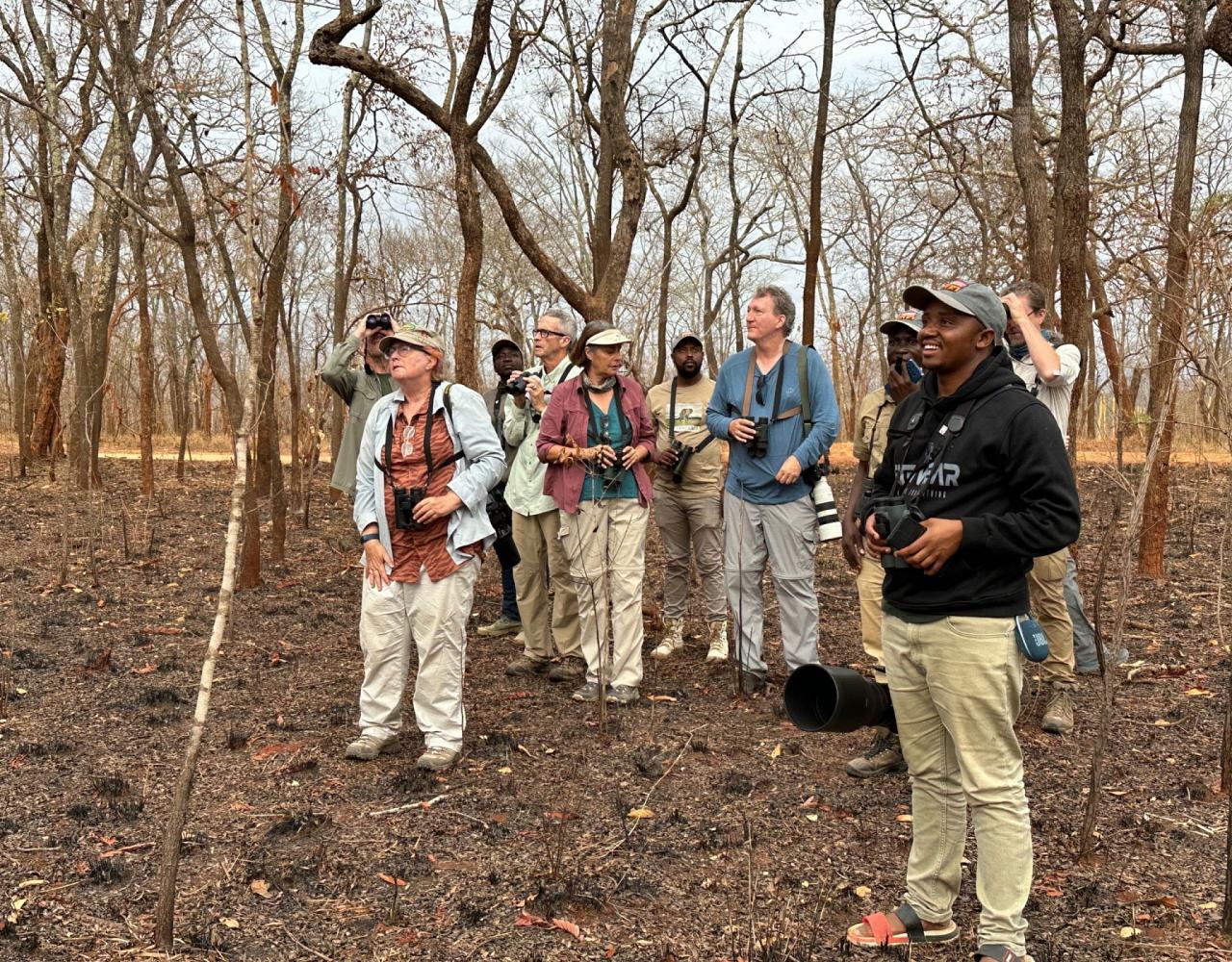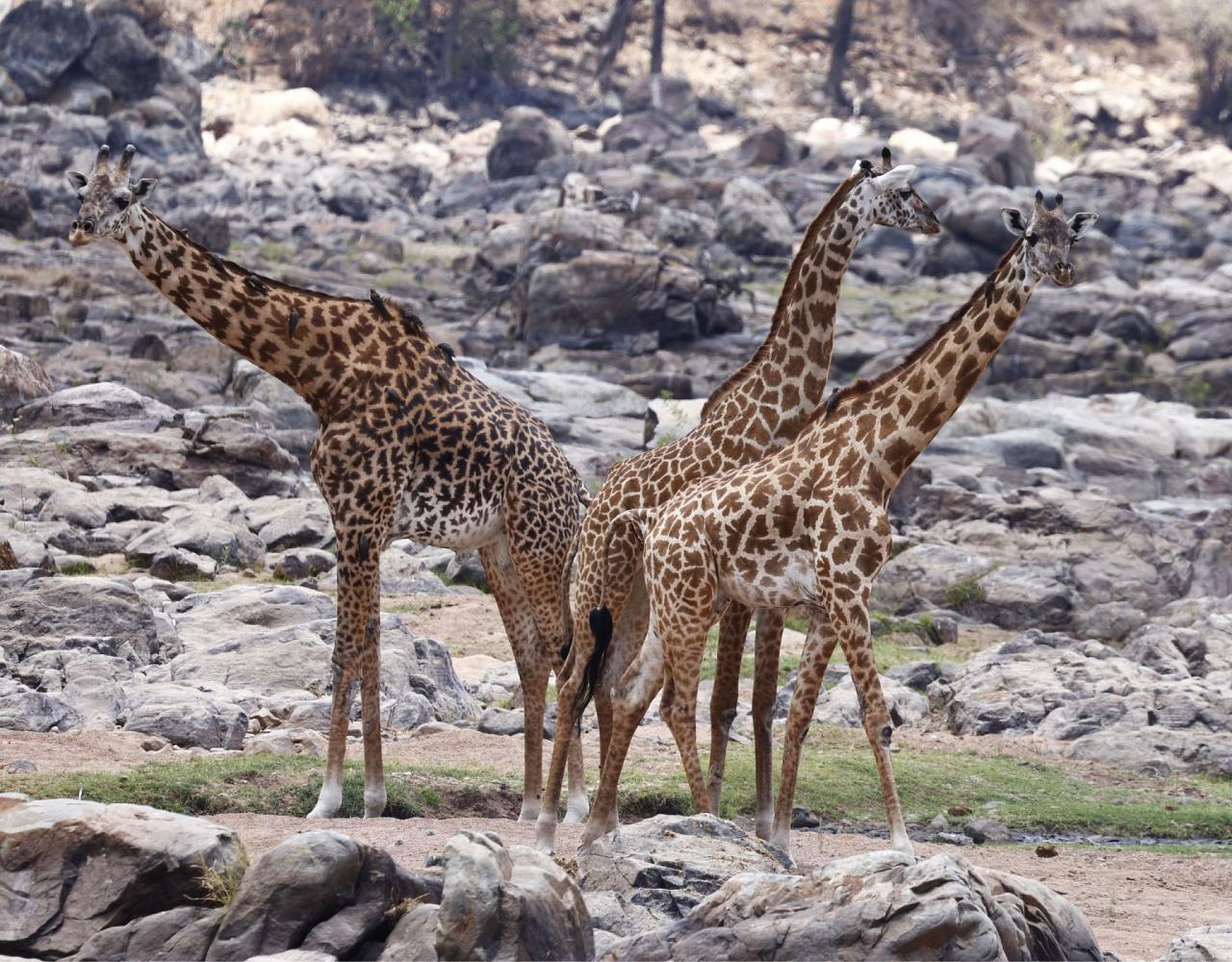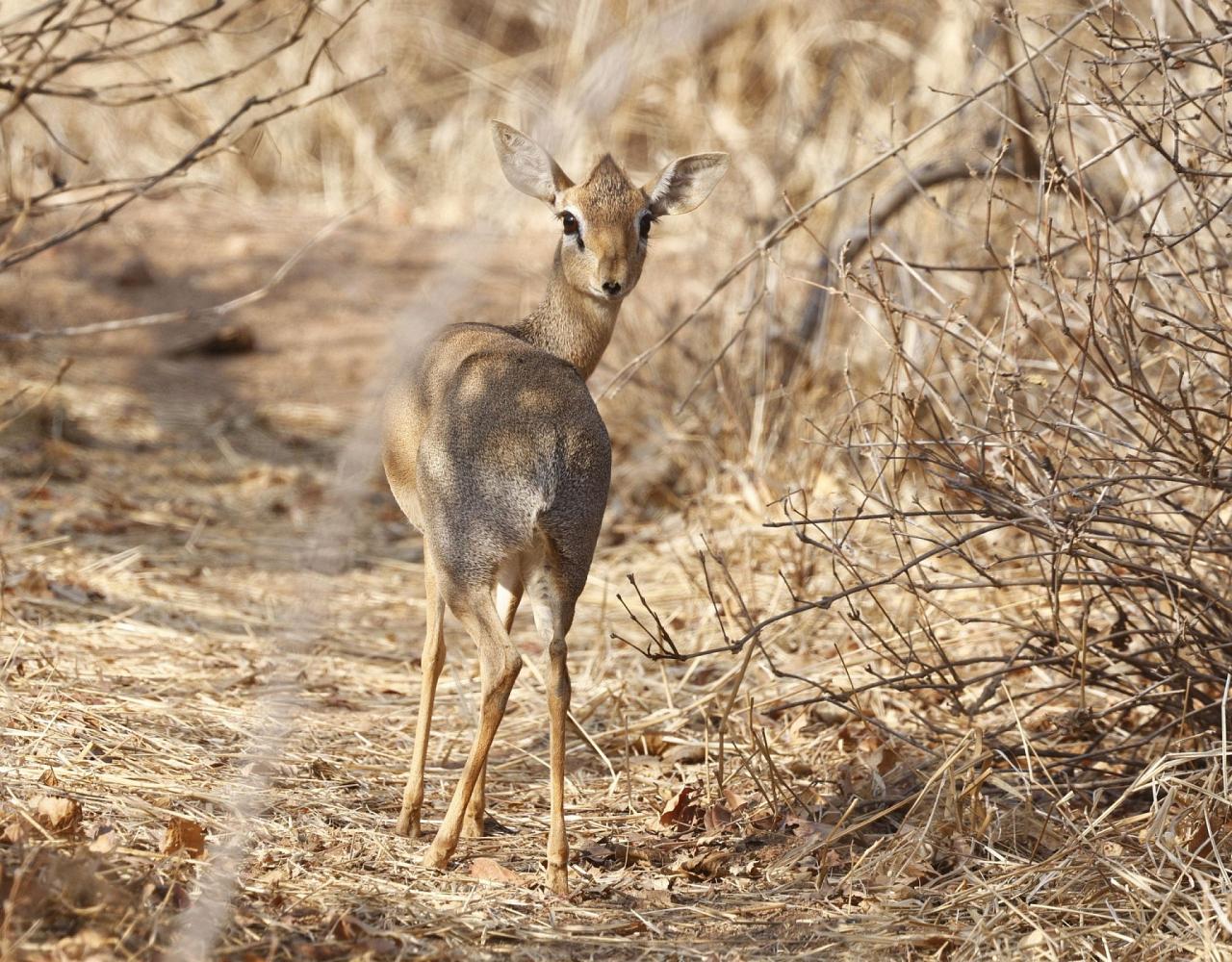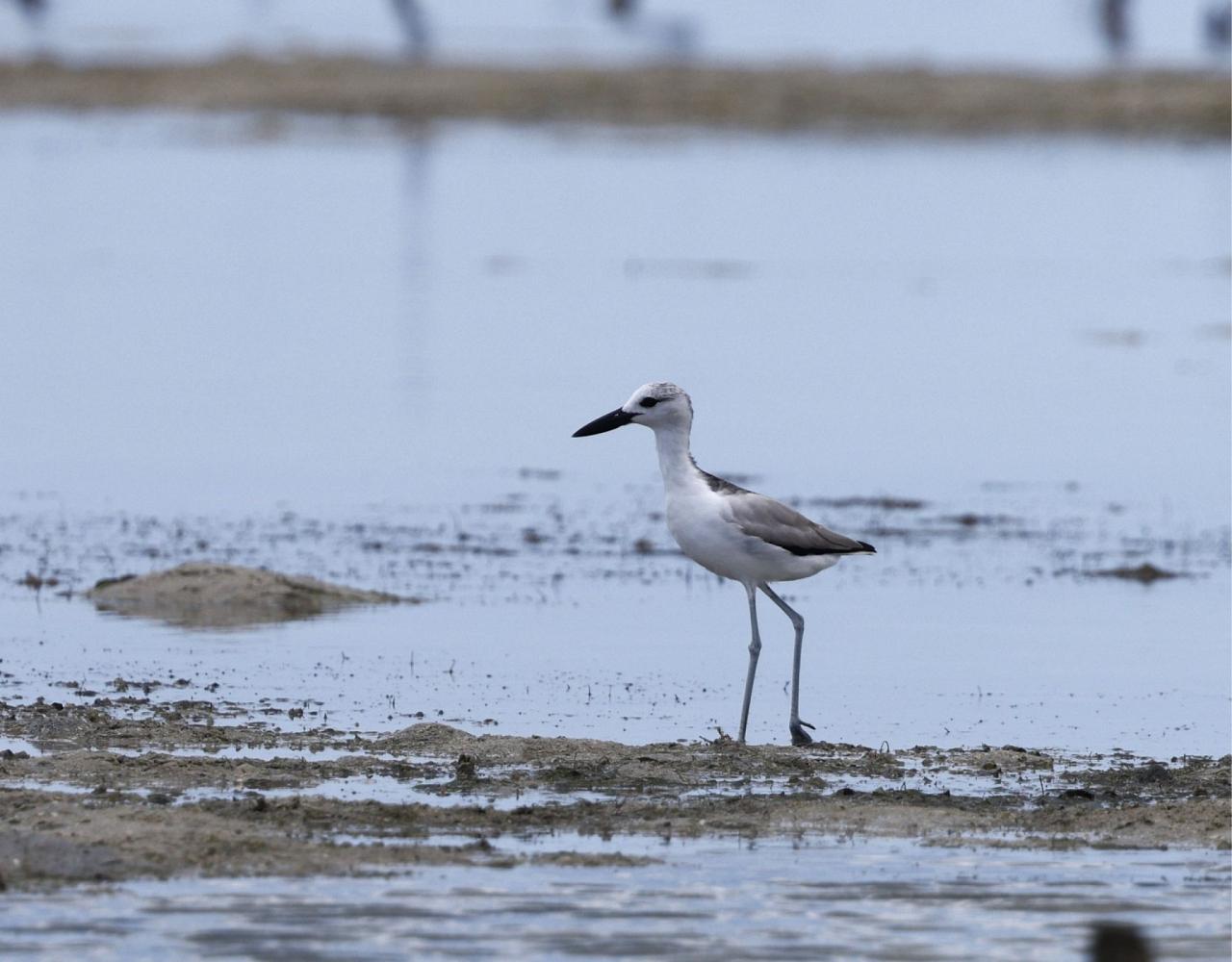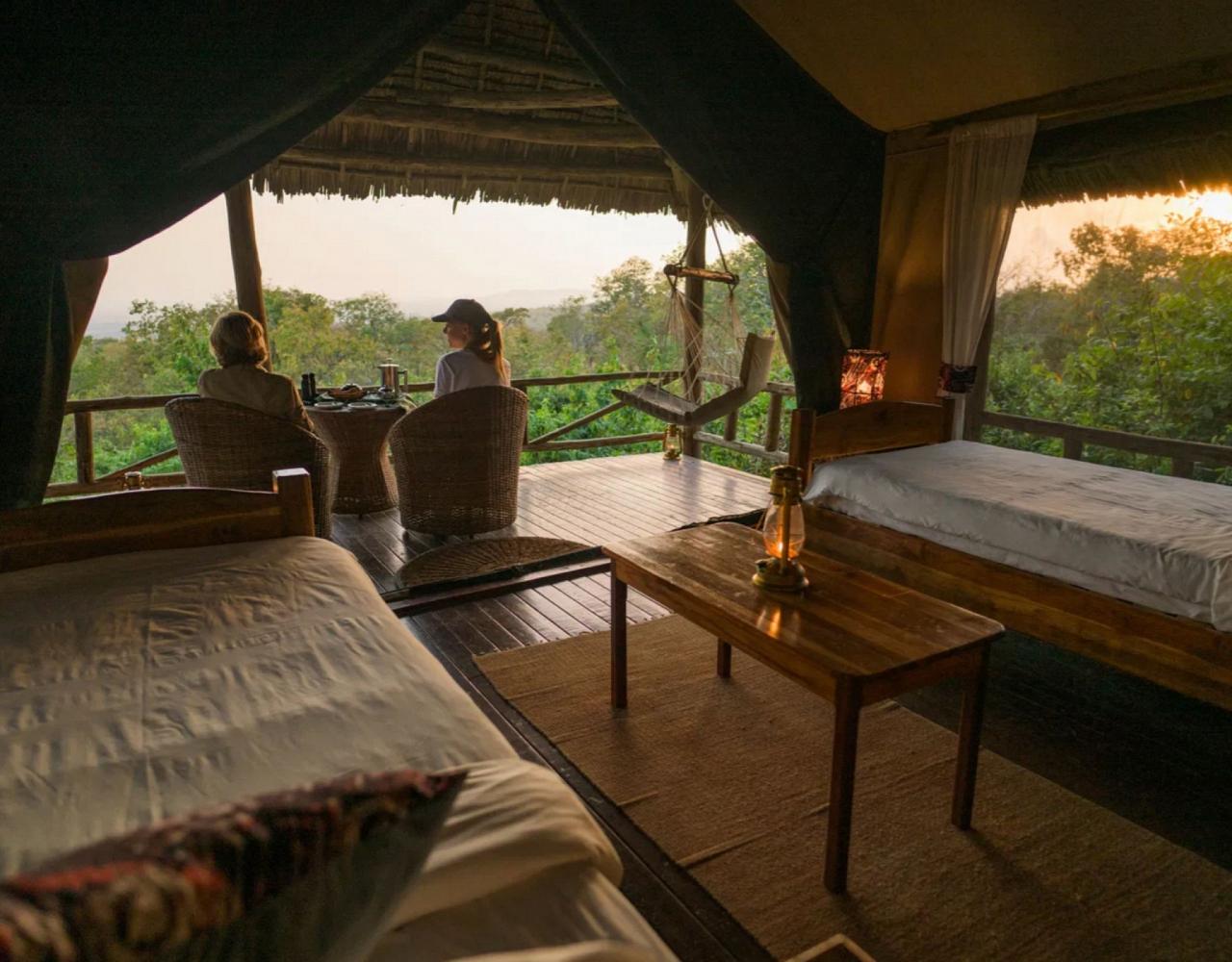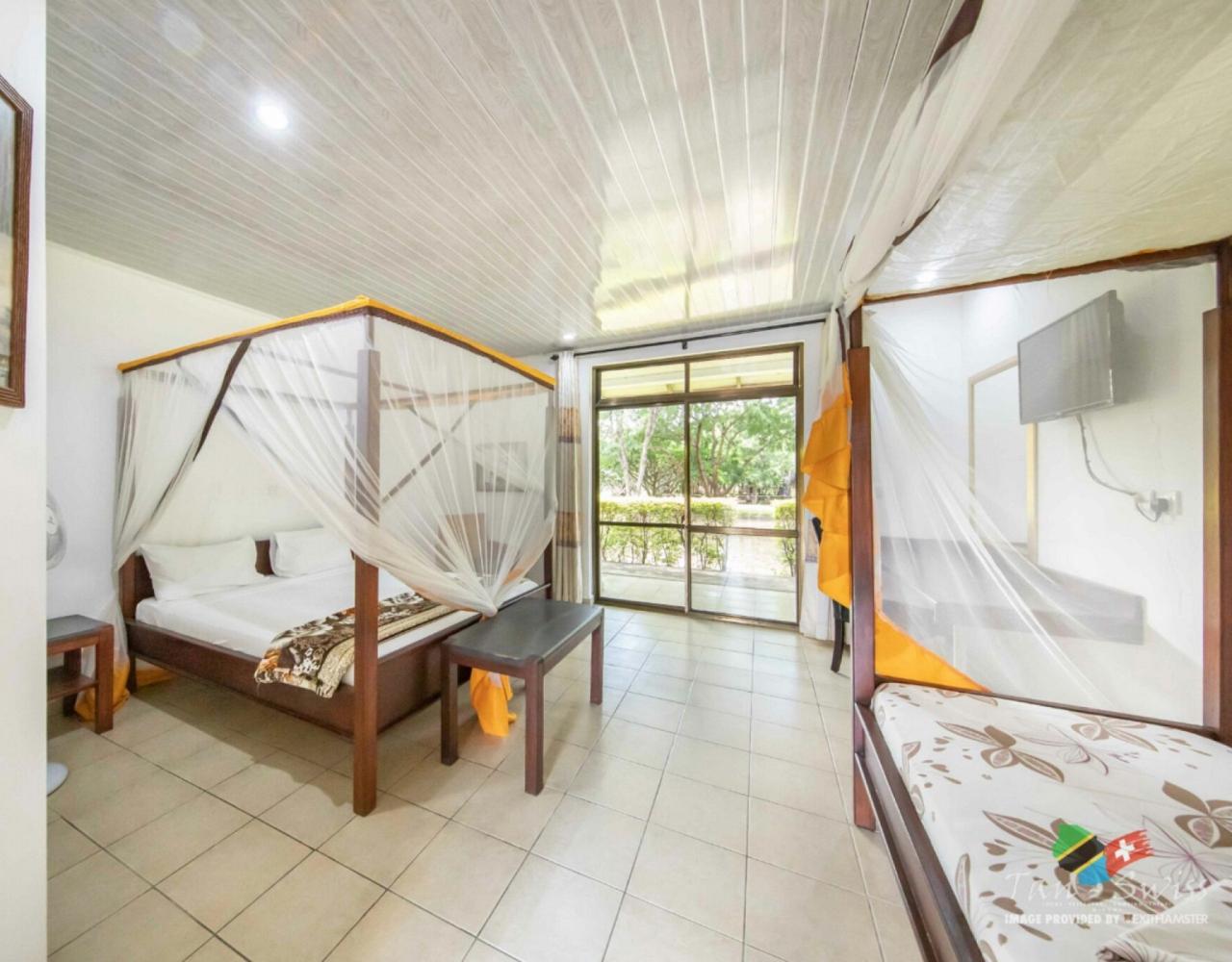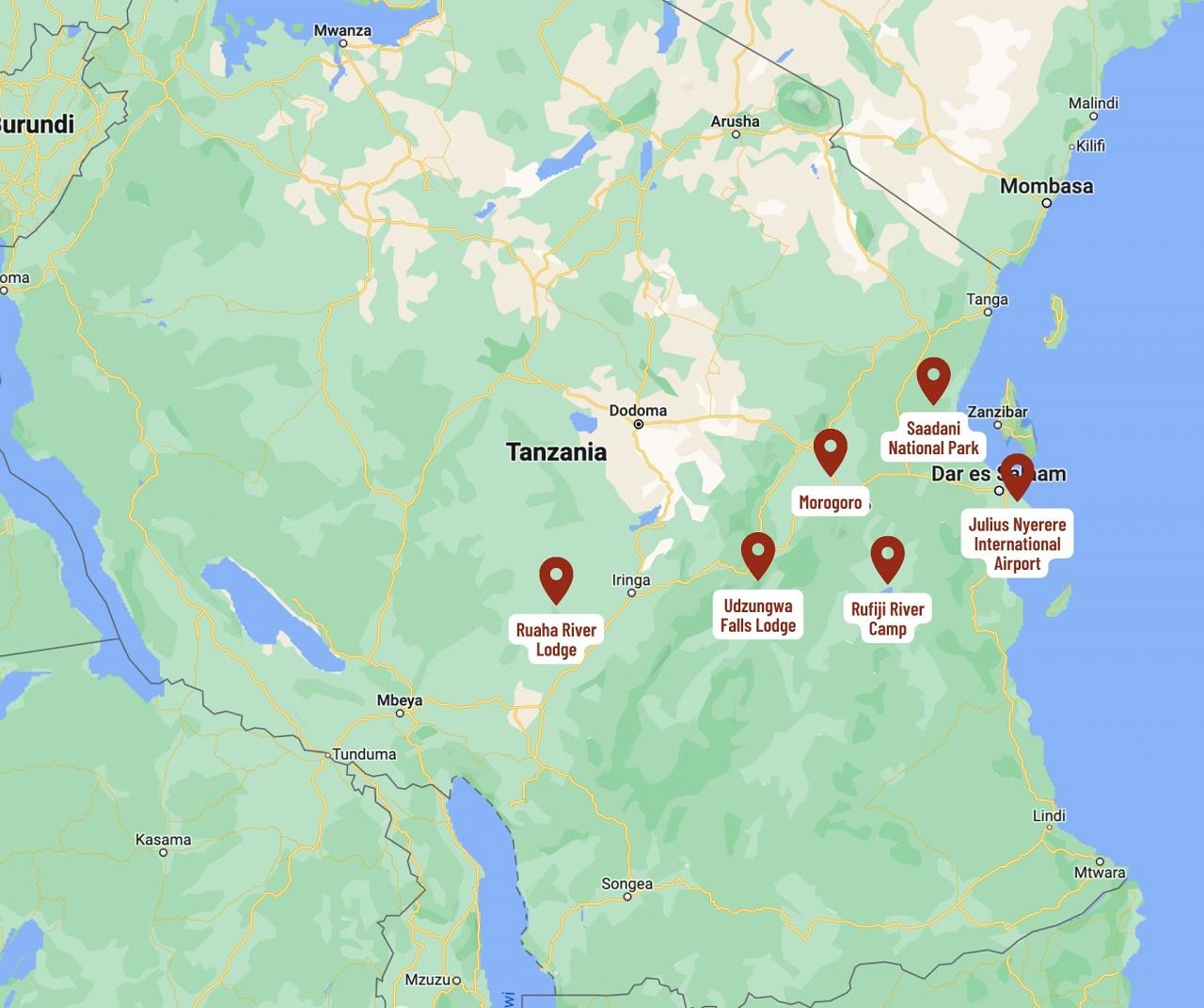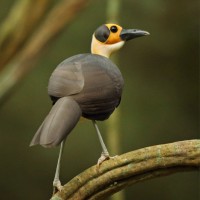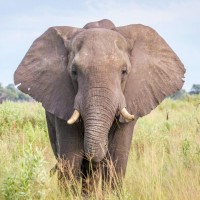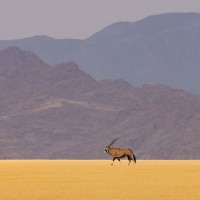- Overview
- Full Itinerary
- Extensions
- Photo Gallery
- Costing
- Travel Details
- Trip Reports
- Guide
- Map
- Know Before You Go
- Other Trips You May Like
Join us to explore Tanzania beyond the Serengeti! We are thrilled to return to this exciting safari, timed to coincide with Southern Tanzania’s dry season, a time when wildlife and birds are concentrated along waterways. Since our last trip in 2023, we have streamlined our travel, expanding the journey by two days for a better pace, and including flights between major areas to ease time spent in travel. This is a wildlife and bird-rich experience not to be missed!
During this time of year we have access to several stunning national parks that are too wet in other seasons. We have prime tented camps and lodges booked and are excited to explore Tanzania’s wildest and less-traveled terrain, a stronghold for African wildlife species, including predators. To include habitat diversity, we also visit remote Pemba Island, a coastal park on the Indian Ocean and isolated mountain ranges that feature unique flora and fauna. Our route samples a great mix of habitats including Miombo forest, giving us a rich array of birds as well as mammals, including some isolated endemics and species not found in northern parts of the country.
From the modern and bustling city of Dar es Salaam, enjoy a boat ride in the mangroves of a coastal park at Saadani where the ocean meets the bush. Fly over to Pemba Island, a fabulous island with endemic birds and life lived as it was in simpler times. Next, we sample Afromontane forests in the foothills of the largest and most diverse range of Africa’s Eastern Arc, the Udzungwa Mountains. From here we visit two famous national parks with ample time for finding wildlife and birds of savannah, acacia woodland, and Miombo woodland at Ruaha and Mikumi, with flights to connect them and ease your travel. Those with more time can add a third splendid park, Nyerere (formerly Selous Game Reserve).
We are once again teaming up with Cisticola Tours to pair their local expertise with that of David Mehlman, Naturalist Journeys’ first Guide of the Year recipient in 2022. The group size is limited to just 10 participants in two vehicles.
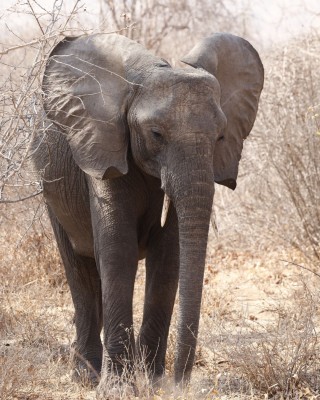

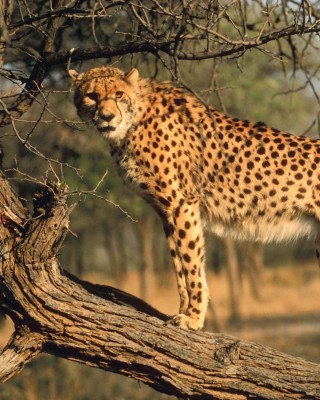
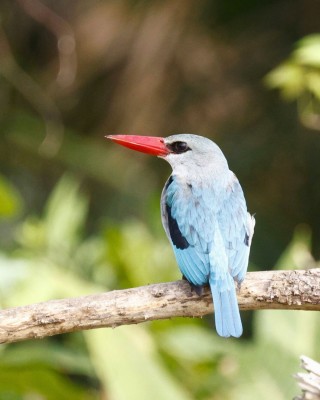
Tour Highlights
- Explore the more remote reaches of Tanzania, beyond the Serengeti
- Visit key national parks and conservation sites known for abundant wildlife
- Find endemic birds on idyllic Pemba Island
- Find wading birds as you boat through coastal mangroves and wetlands north of Dar es Salaam at Saadani National Park
- Search for unique forest birds in the Udzungwa Mountains, the largest of Africa's isolated chain of mountains known as the Eastern Arc
- Spend three nights in Ruaha National Park, known for its Lions, Leopards, and classic grazing mammals
- Find Zebra, Wildebeest, Giraffe, and beautiful, colorful birds at Mikumi National Park
- Fly between prime locations for a bird’s eye view and to ease time spent driving (flights included)
- Stay three nights in well-appointed safari tents at Rufiji River Camp with a river view; dine under the stars
- Bird in Miombo Woodland and watch for stately Ground Hornbill on more open plains
- Watch for wildlife along the Sand Rivers of Nyerere National Park (formerly Selous Game Reserve), made famous in the writings of Peter Matthiesson on an optional extension

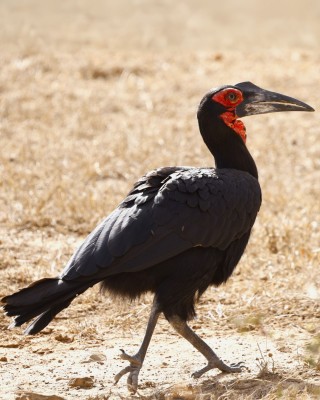
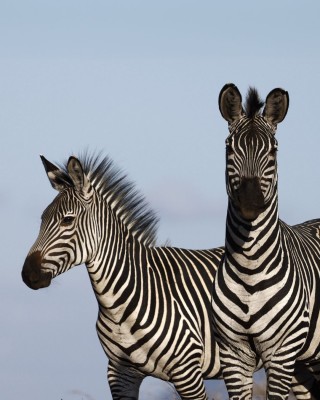

Trip Itinerary
Itineraries are guidelines; variations in itinerary may occur to account for weather, road conditions, closures, etc. and to maximize your experience.
Sun., Sept. 7 Arrival in Dar es Salaam
The tour starts in southern Tanzania’s business capital, Dar es Salaam. Please plan to arrive via the Julius Nyerere International Airport (DAR), where our driver greets you for a transfer to our comfortable city hotel. If you choose to come in early, our partners can book rooms and help you with activities. For those of our group who arrive a few days early or early in the day, this afternoon we can make a short trip to some close locations to kick start our birding. Enjoy a welcome dinner and a chance to rest up from travels.
Accommodations at Serena Hotel, Dar es Salaam (D)
To arrive by the tour start date, you typically have to leave the USA one to two days ahead of time. As a bonus to travel with us, our travel agent is available to help you research and book airfare; we pay her ticketing fees.
Mon., Sept. 8 & Tues., Sept 9 Coastal Birding at Saadani National Park
Leaving early, we drive north to Saadani National Park, a famous park where the coast literally meets the bush, arriving in time for lunch on their delightful oceanside dining deck. After settling in to our lovely beachfront casitas we enjoy our first game drive in the bushland and grassland savannah habitats of the park. The next day is a trip highlight as we take an early morning boat excursion on a local river for close views of waders and other species. Birds we may find here include Yellow-bellied Greenbul, Lilac-breasted Roller, Black-bellied Starling, Purple-banded Sunbird, Crowned Hornbill, Blue-naped Mousebird, Brown-hooded Kingfisher, Saddle-billed Stork, Black-backed Puffback, Red-necked Spurfowl, Crested Francolin, White-crested Helmetshrike, and Black-bellied Bustard. We should also find our first African mammals including Yellow Baboon, African Elephant, Common Impala, Common Waterbuck, and Maasai Giraffe. With luck we may see our first predators which could include Leopard or Lion.
Our lodgings are on the beach, providing us a wonderful way to unwind from the long flight as well as a great way to find coastal species. Enjoy a cocktail by the pool or a refreshing swim.
Accommodations at Saadani Safari Lodge, Saadani (B,L,D)
Wed., Sept. 10 Saadani National Park | Ruvu & Wami Rivers | DAR
After a final morning at Saadani, we pack up and return to Dar es Salaam, birding along the way. Two interesting stops on the Ruvu and Wami Rivers allow us to search for some species endemic to Tanzania and to stretch our legs. We should see a host of water-associated species as well.
We return to the lovely Serena Hotel where you can pick up anything you might have had in storage and refresh before flying to the islands tomorrow.
Accommodations at Serena Hotel, Dar es Salaam (B,L,D)
Thurs., Sept. 11 Pemba Island, Zanzibar’s Quiet Sister | Local Birding
On our last trip, Pemba Island was an optional extension, but as it made everyone’s favorite of the trip list, and has a number of endemic bird species, so we’ve included it this year with ample time to explore. There are marvelous coastal flats for viewing shorebirds, interspersed with locals avidly pursuing their fishing trade. There are intriguing forests, open agricultural areas and small villages.
Welcome to soft island air, clear skies, and a drive to the north side of the island, birding along the way. After settling into our oceanside lodge and having lunch, we head out to find a host of species that may include Madagascar Bee-eater, Broad-billed Roller, Dickinson’s Kestrel and African Paradise Flycatcher.
Return to enjoy sunset over the ocean and a delightful open-air dinner with a view of pool.
Accommodations at Pemba Paradise Resort (B,L,D)
Fri., Sept. 12 & Sat., Sept. 13 Two Full Days on Pemba Island
We have two full days and many birding hotspots to see. There are several wetland areas we want to check where we can search for delightful African Pygmy Goose and possible White-backed Duck among the more abundant White-faced Whistling Ducks. Little Grebe and African Jacana are plentiful and we may find Malagasy Pond Heron, a stunning bird.
A visit to Ngezi Forest (home of the rare Pemba Flying Fox) provides us with some great birding. Our key bird here by day is the endemic Pemba Green Pigeon which feeds on fruit; on a return night trip we should find Pemba Scops-Owl. We also bird other parts of the island, including the clove farms and the sandy beaches. Other Tanzanian endemics we look forward to seeing include the Pemba Sunbird and Pemba White-eye, as well as the Pemba Vervet Monkey. Mangrove Kingfisher and African Pygmy Kingfisher brighten anyone’s day!
Msuka Beach is a designated Important Bird Area and a fabulous place to study shorebirds. Curlew and Terek Sandpiper are common, along with Little Stint, Greater Sand-Plover and near the water’s edge, much sought-after Crab Plover.
Other highlight birds include Sooty Gull, Brown-headed Parrot, Bar-tailed Godwit, Eurasian Whimbrel, Grey Plover, Black Heron, Dimorphic Egret, Java Sparrow, Swift Tern, Lesser Crested Tern, Saunders’s Tern, Common Tern, Palm-nut Vulture, and Black-winged Red Bishop.
On Pemba it is also wonderful to experience the peace of island life, birding in a schoolyard with kids waving out the windows, watching fisherman haul in their catch, seeing locals dry their farm crops on colorful cloths, friendly smiles everywhere. It is a place you won’t want to leave.
Accommodations at Pemba Paradise Resort (B,L,D)
Sun., Sept. 14 Flight to Mikumi National Park | Woodlands & Plains of Mikumi National Park
A wonderful improvement to our trip this year is to fly between key areas of the trip. This morning we fly from Pemba to Kikoboga Airstrip near Mikumi National Park. Mikumi provides our best close-up mammal viewing of the trip as it is more often visited, so the animals are more acclimated here, as they are in Northern Tanzania. Right next door we find the best chance for Miombo Forest birding—we are happy to have two full days here.
This fourth largest park in Tanzania gives us time to survey the plains reminiscent of the Serengeti. Picturesque Baobab trees are favorites of several avian species. Watch for Eland along the Mkata River and search for African Buffalo, Kudu, and Sable Antelope. Hippos and numerous Elephant families lounge in large natural pools, wetlands are where we often find some of our best birding. We have good access to Miombo Woodland and this habitat holds fascinating resident bird species including spectacular Racket-tailed Roller.
We divide our time between grasslands and wetlands of the park and the Miombo, alternating morning and afternoon safari drives and forest walks. Best of all, our camp is great for birding, including night birding! We stay in large platform tents that have inside bathrooms and wonderful porches. Keeping a light footprint on the landscape, they let us be immersed in nature. Vuma Hills is a small camp, 16 tents, and the central bar area surrounding a fire pit under an intricate thatch roof is memorable. Cool off with a dip in the pool. Marvel at the dark skies and stars.
Accommodations at Vuma Hills Tented Camp, Mikumi (B,L,D)
Birding Highlights: Southern Ground Hornbill, African Scops-Owl, African Barred (Scheffler’s) Owlet, Grey Kestrel, Shikra, Fiery-necked Nightjar, Crested Barbet, Black-bellied Bustard, Golden-tailed Woodpecker, Green-backed Woodpecker, Speckle-throated Woodpecker, Brown/Meyer’s Parrot, Brown-necked Parrot, Retz’s Helmetshrike, White-crested Helmetshrike, Northern Pied Babbler, Lesser/Miombo (Southern) Blue-eared Starling, Shelley’s/Hofmann’s Sunbird, Pale-billed Hornbill, Tanzania/Ruaha Red-billed Hornbill, Orange-winged Pytilia, Western Violet-backed Sunbird, Miombo Double-collared Sunbird, Racket-tailed Roller, Broad-billed Roller, Ashy Starling, Brown-hooded Kingfisher, Brown-crowned Tchagra, White-breasted Cuckooshrike, Livingstone’s Flycatcher/Livingstone’s Warbler, Rufous-Bellied (Cinnamon-breasted) Tit, African Penduline Tit, Stripe-breasted (Reichard’s) Seedeater, Thick-billed Cuckoo, Yellow-collared Lovebird, Miombo/Stirling’s (Barred) Wren-Warbler, Red-winged Warbler, Yellow-bellied Eremomela, Green-capped Eremomela, Yellow-bellied Hyliota, Croaking Cisticola, Neddicky/Piping Cisticola, White-winged (Orange-shouldered) Widowbird, Black-winged Red Bishop, Zanzibar Red-Bishop, White-headed Black/Arnott’s Chat, Red-tailed/Familiar Chat, Kurrichane Thrush, Bearded Scrub Robin, Miombo Rock Thrush, Swallow-tailed Bee-eater, Collared Pratincole, Knob-billed Duck, Jameson’s Firefinch, Broad-tailed Paradise Whydah, Purple Indigobird, Black-collared Barbet
Mammal Highlights: African Lion, Leopard, Honey Badger, Bushy-tailed Mongoose, Black-backed Jackal, African Wild Dog (rare), Spotted Hyena, African Civet, African Elephant, Nile Hippopotamus, Maasai Giraffe, Bohor Reedbuck, Cape Buffalo, Blue Wildebeest. Night mammals can be viewed at feeders at the lodge.
Mon., Sept. 15 & Tues., Sept 16 Miombo Woodlands Walk | Safari Drives
Mikumi National Park is a scenic gem, with mountains in view of wide open grassland terrain. We plan to alternate morning and afternoon game drives, with forest walks in nearby Miombo Woodlands, a great blend for our days. This is a park much treasured by photographers and birders alike, with over 400 species noted. Just driving to and from the park gate to our lodge we find intriguing species, including Zebra, Southern Ground Hornbill, and Black-bellied Bustard.
Mid-day we enjoy lunch and a break at camp, though many birds are easy to spot in the shrubs in view of our patio. Emerald-spotted Wood Dove, Eurasian Hoopoe, Striped Kingfisher, Scarlet-chested Sunbird and Yellow-fronted Canary are all active around the camp.
Dinners are prepared with care here and feature fresh vegetables and local dishes as well as international cuisine. Fiery-necked Nightjar sing you to sleep.
Accommodations at Vuma Hills Tented Camp, Mikumi (B,L,D)
Wed., Sept. 17 Udzungwa Mountains, An Isolated Range of Africa’s Eastern Arc
This morning we leave Vuma Hills Camp and head to the great Udzungwa Mountains, the southernmost, largest, and most diverse of 13 isolated ranges that form the chain of Africa’s Eastern Arc. Watch for raptors such as Shikra, African Goshawk, and Black-chested Snake Eagle as we drive.
Over the next two days, we change habitats to sample lush forests, looking for specialty birds and the interesting flora. Much of the mountain slopes are still forested, with Miombo woodlands grading into montane forests protected in Udzungwa National Park. There are six species of primates found here, including two endemics: the Iringa Red Colobus and the Sanje-crested Mangabey, as well as endemic chameleons. Some of these are possible to see right from our lodge!
With luck we find colorful Livingstone’s Turaco, Green Malkoha, both Crowned and Trumpeter Hornbills, White-eared Barbet, several species of woodpecker, Black Cuckooshrike, Square-tailed Drongo, Waller’s Starling, Uluguru Violet-backed and other sunbirds, African Crested Flycatcher, and Forest Weaver.
Our lodge is carefully constructed to have minimal impact on the surrounding Udzungwa forest. The World Wildlife Fund recognizes this area as one of its Global 200 hotspots and works on reforestation and community conservation projects in the area.
Accommodations at Udzungwa Falls Lodge, Udzungwa (B,L,D)
Other Birding Highlights: Livingstone’s Flycatcher/Livingstone’s Warbler, Black-and-white Shrike-Flycatcher, White-tailed Crested Flycatcher, White-necked Raven, Southern/Uhehe Fiscal, Black-fronted Bushshrike, African Broadbill, Moustached Tinkerbird, Green Tinkerbird, Green Barbet, Lemon Dove, Purple-crested Turaco, Shelley’s Greenbul, Yellow-streaked Greenbul, Grey-olive Greenbul, Yellow-bellied Greenbul, Pallid Honeyguide, Mottled Spinetail, Bohm’s Spinetail, Scarce Swift, Square-tailed Nightjar, Forest (Dark) Batis, Trilling Cisticola, Singing Cisticola, Siffling Cisticola, Black-lored Cisticola, Churring Cisticola, Black-headed Apalis, Chapin’s Apalis, Brown-headed Apalis, White-winged Apalis, Brown Parisoma, Yellow-throated Woodland Warbler, Kretschmer’s Longbill, Crested Guineafowl, Eastern/Forest Double-collared Sunbird, Loveridge’s (Moreau’s) Sunbird, Malachite Sunbird, Olive-flanked Robin-Chat, Orange Ground Thrush, Collared Palm Thrush, Slender-billed Starling, Cassin’s Hawk-Eagle, Yellow-browed/Streaky Seedeater, Lesser/Nyasa Seedcracker, Usambara Weaver, Yellow-crowned Canary, Eastern Bronze-naped Pigeon, Olive Woodpecker, Red-faced Crimsonwing, Fawn-breasted Waxbill, Blue Waxbill/ Southern Cordon-bleu, and African Firefinch.
Thurs., Sept. 18 Kilombero Swamp Floodplain & the Udzungwa Mountains | Return to Mikumi Area
We leave early and make a short trip to a very interesting floodplain where some newly discovered bird species have just recently been fully described to science, the Kilombero Weaver and both Kilombero and White-tailed Cisticola, that latter having only received scientific descriptions in the last few years—wow! The region is fast becoming encroached by agriculture, fishing, and cattle grazing but along the roadside we hope to find habitat patches for these three species so the reeds and rushes are of particular interest to us. There are interesting water-associated birds as well such as Fan-tailed Widowbird, Purple Heron, African Openbill, Yellow-billed Stork, and more.
In the afternoon, after additional birding in forests of the Udzungwa Mountains as time allows, we return to a hotel near the airstrip to be able to fly to Ruaha in the morning.
Accommodations at Tanswiss Lodge near Mikumi NP (B,L,D)
Other Birding Highlights: Grey-rumped Swallow, Red-headed Quelea, Siffling Cisticola, African Reed Warbler, Red-winged Warbler, Spur-winged Goose, Palm-nut Vulture, Red-necked Falcon, White-fronted Bee-eater, African Skimmer, Black Heron, African Darter, Giant Kingfisher, White-crowned Lapwing, African Wattled Lapwing, Magpie Mannikin, Orange-breasted/Zebra Waxbill, Coppery-tailed Coucal, Marsh (Anchieta’s) Tchagra, Fan-tailed Widowbird, Parasitic Weaver
Mammal Highlights: Udzungwa (Iringa) Red Colobus, Angolan Pied Colobus
Fri., Sept. 19 Flight to Ruaha National Park | Safari Drive
From the Mikumi airstrip we take a scenic flight to one of Tanzania’s largest and most famous national parks: Ruaha. We need to drive to the airstrip, but with the flight saving a full day of driving, we can be on safari that day!
This is one of the most scenic parks in Africa, a rugged arid landscape that wraps around a dynamic river. Sit on the veranda of your room and watch wildlife as you settle in, perhaps with a Giant Kingfisher or a big bull Elephant in view. The rooms are large and have a sitting area, twin or double beds and a large interior bathroom with hot water supplied by solar energy. Enjoy African textiles and colorful furnishings. Dining and bar services are outside with a view; in the evening you may wish to gather around the campfire. Wildlife can roam within the camp so after hours, a Maasai guide escorts you to your accommodation. This is the place to be in Ruaha! Listen to the melodious calls of Water Thick-knee at dawn and dusk.
Accommodations at Ruaha River Lodge, Ruaha (B,L,D)
Sat., Sept. 20 & Sun., Sept. 21 Remote & Scenic Ruaha National Park
Slate-colored Boubou may be your alarm clock this morning and you won’t want to miss sunrise painting colors on the rock features all around you. Ruaha National Park is one of the largest and most scenic national parks in Tanzania, and it always amazes us on each visit. It covers an area of over 5000 square miles, spanning the heart of a more extensive ecosystem, which includes Rungwa and Usangu Game Reserves, and several other protected areas within Central Tanzania. The park is named after the Great Ruaha River, which flows along its southeastern edge. This mighty river often forms the focus for game viewing, as it provides the lifeline to this great ecosystem.
We want to get out early to explore. This wild landscape, even more remote than the other two parks, is beautiful with fascinating rock escarpments and kopjes, and baobab trees rising above other vegetation. Lion, Elephant, Giraffe, buffalo, various antelopes, and Hyena are commonly encountered and there are many birds; the list for the park is over 500 species. Cheetah and African Wild Dog are always elusive but possible to observe. The park area has recently been expanded to include adjacent wildlife areas. Elephant and other species are often in view from the lodge near a water hole.
The main vegetation is semi-arid bush, through which the Great Ruaha River flows. The arid bush is transitional to acacia savannah and Miombo woodland, the latter home to lovely Roan and Sable Antelopes. Greater Kudu are the symbol of the park, and we admire the male’s massive, twisting horns. By September, the river’s flow may have diminished from the rainy season torrents to settle into intermittent pools. We often drive the band of green vegetation that charts its course. The draw to water is intense, but for prey animals is always risky. Ruaha is known for high Lion densities but also has Cheetah in the more open savannah areas and Leopard where trees line the water courses or in picturesque rocky terrain. African Wild Dog are present but difficult to find due to their very large home ranges. Bat-eared Fox and Black-backed Jackal can also be seen.
Accommodations at Ruaha River Lodge, Ruaha (B,L,D)
Birding Highlights of Ruaha: Harlequin Quail, Hildebrandt's Francolin, Blue-spotted Wood-Dove, Yellow-throated Sandgrouse, White-bellied Bustard, Purple-crested Turaco, Senegal Coucal, Freckled Nightjar, Mottled Swift, Allen's Gallinule, Lesser Moorhen, Spotted Thick-knee, Caspian Plover, Greater Painted-Snipe, Green Sandpiper, Bronze-winged Courser, African Skimmer, African Openbill, Abdim's Stork, Saddle-billed Stork, Purple Heron, Rufous-bellied Heron, Palm-nut Vulture, African Cuckoo-Hawk, Verreaux's Eagle, African Scops-Owl, Pel's Fishing-Owl, Common Scimitarbill, Southern Ground-Hornbill, Tanzanian Red-billed Hornbill, Madagascar Bee-eater, Northern Carmine Bee-eater, Rufous-crowned Roller, Bennett's Woodpecker, Golden-tailed Woodpecker, Red-necked Falcon, White-crested Helmetshrike, Black-crowned Tchagra, Common Square-tailed Drongo, Magpie Shrike, White-necked Raven, Rufous-naped Lark, Eastern Nicator, Miombo Wren-Warbler, Green-backed Camaroptera, Tabora Cisticola, Wailing Cisticola, Angola Swallow, Yellow-bellied Greenbul, African Yellow White-eye, Scaly Chatterer, African Spotted Creeper, Ashy Starling, Lesser/Miombo Blue-eared Starling, Gray Tit-Flycatcher, Ruaha Chat, Arnot's/White-headed Black Chat, Western Violet-backed Sunbird, Purple-banded Sunbird, Black-necked Weaver, Tanzania/Tanganyika Masked Weaver, Cardinal Quelea, Southern Red Bishop, Yellow-mantled Widowbird, Southern Cordon-bleu, Orange-winged Pytilia, Jameson's Firefinch, Steel-blue Whydah, Striped Pipit, Southern Citril, Cabanis's Bunting, Swahili Sparrow, Southern Gray-headed Sparrow, Yellow-throated Bush Sparrow (Petronia)
Mammal Highlights: Sable Antelope, Roan Antelope, African Lion, Leopard, Cheetah, Maasai Giraffe, Elephant, Common Zebra, Common Eland, Common Impala, African Wild Dog, Bat-eared Fox
Mon., Sept. 22 Departures | Or Extension to Nyerere National Park
It is very difficult to leave Africa, but we have time to enjoy sunrise, a bird walk on the grounds, and a lovely breakfast. Pending our flight time, we can also do another morning game drive before heading back to Dar es Salaam on a flight from the local airstrip. Most flights leave for the USA in the evening, so most of the group will be able to continue on to their homebound flights. If you need to overnight for a flight tomorrow, we can help you book accommodations.
It is also hard to say goodbye to our safari friends, but our group will split up here, as some will take a different plane on to more adventures, joining the extension in fabulous Nyerere National Park, formerly known as Selous. (B,L)
Nyerere National Park Post-Tour Extension
Itineraries are guidelines; variations in itinerary may occur to account for weather, road conditions, closures, etc. and to maximize your experience.
Mon., Sept. 22 – Wed., Sept. 24: Legendary Nyere National Park Extension
For those with additional time we can highly recommend fitting in one more park, the incomparable Nyerere National Park (formerly known as Selous Game Reserve) so famous for studies of African mammals and film documentaries. This is the country that Peter Matthiesson described so well in his classic book Sand Rivers, illustrated by photographer Hugo Van Lawick during the time they did research there.
We arrive at the park airstrip on a flight from Ruaha NP. We find some of our best wildlife along the Rufiji River and tributaries that drains eastern and central Tanzania before heading to the Indian Ocean. On safari drives, we explore extensive rivers, hills, and plains. The 372 mile long Rufiji River is the longest river in the country and this time of year we find concentrating birds and mammals for some incredible viewing. Watch Hippo loaf in their pools and listen to their almost constant chortling. They share the pools with massive Nile Crocodile and a host of water-associated birds.
Nyerere is the new name for a good portion of what was Selous Game Reserve, once Africa's largest game reserve, which occupied an area of almost 20,000 square miles—more than the area of Switzerland. The park has a higher level of protection for its almost 12,000 square miles and is still over twice the size of Serengeti National Park in the north. A third of Tanzania’s Elephant population occurs here. The park is predominantly Miombo Woodland; with sections of vast grasslands. Habitat diversity gives rise to a bird list of over 450 species, perhaps the most sought after being the striking Bohm’s Bee-eater.
The mighty Rufiji River system flows from west to east, cutting its way through the reserve. This beautiful river serves as a drainage from the mountains of the Udzungwa Escarpment and the nearby Mahenge Massif. This huge river is in turn fed by other rivers creating a delta, including the Great Ruaha River and the Kilombero River from the west. From the southwest, three main rivers, namely Luwegu, Luhombero, and Mbarangandu, also feed the Rufiji. The Lukuiro complex drains the Kichi Hills to the east. A boat trip is one of the highlights of our stay here, replete with birds and mammals.
Our beautifully appointed chalets are located with a view of the river, furnished comfortably with African style, and we have inside bathrooms and delightful outdoor showers with a natural view. We dine with the river in view and there is a pool to enjoy during down time. Wildlife roams freely through the lodge area, so after dark the local watchmen guides you home—be sure to check the amazing star-filled skies!
Accommodations at the Serena Mivumo River Lodge, Nyerere NP (B,L,D)
Birding Highlights: Little Bittern, Goliath Heron, Madagascar Squacco Heron, Hamerkop, Woolly-necked Stork, Saddle-billed Stork, Lappet-faced Vulture, African Marsh Harrier, Ovampo Sparrowhawk, Dickinson's Kestrel, African Crake, Black-bellied Bustard, African Green Pigeon, Brown-headed Parrot, Brown-necked Parrot, Livingstone's Turaco, Great Spotted Cuckoo, Burchell’s Coucal, African Barred Owlet, Gabon Nightjar, Bohm's Spinetail, Half-collared Kingfisher, Bohm's Bee-eater, Swallow-tailed Bee-eater, Racquet-tailed Roller, Pale-billed Hornbill, Whyte's Barbet, Crested Barbet, Scaly-throated Honeyguide, Bennett's Woodpecker, Flappet Lark, Mosque Swallow, Eastern Saw-Wing, Zitting Cisticola, Ashy Flycatcher, Livingstone's Flycatcher, Shelley's Sunbird, Black-headed Batis, African Golden Oriole, Southern Grey-headed Sparrow, Parasitic Weaver, Olive-headed Weaver, Magpie Mannikin, Broad-tailed Paradise Whydah, Stripe-breasted Seedeater, Eastern Bearded Scrub Robin, Miombo Rock Thrush, White-headed Black (Arnot's) Chat
Mammal Highlights: Vervet Monkey, Dwarf Mongoose, Warthog, Maasai Giraffe, White-bearded Wildebeest, Elephant, Greater Kudu, Steenbock, African Buffalo, African Lion
Thurs., Sept. 25 : To Dar es Salaam | Departures
We enjoy some more birding at Selous in the morning as we scan for additional species. Then we leave for Dar es Salaam; our drive is about four hours, and we leave some time for birding and stops on the way. We time this for most late-evening international flights out, and first enjoy dinner at a local restaurant before the airport transfer for flights home, marking the end to our lovely tour. Those that wish can be dropped off at a hotel in Dar es Salaam if you plan to stay overnight and depart tomorrow morning. (B,L)
Cost of the Journey
Cost of this Tanzania safari is per person, based on occupancy: $14,300 DBL / 15,700 SGL (singles are limited)), from Dar es Salaam, Tanzania. This cost includes all of four internal flights which are DAR to PEMBA, PEMBA to Mikumi NP, Mikumi to Ruaha NP and Ruaha back to DAR. It also includes accommodations for 15 nights, all meals as specified in the itinerary, professional guide services, safari transportation, other activity, park and program entrance fees and miscellaneous program expenses.
Cost of the Nyerere NP extension is per person, based on occupancy: $3590 DBL / $4190 SGL (singles are limited). It includes the flight from Ruaha to Nyerere plus the flight back to DAR from Nyerere, accommodations for 3 nights, all meals specified in the itinerary, professional guide service, safari transportation, activity, park and permit fees and miscellaneous program expenses.
Tour and extension costs do not include: round-trip transportation from your home city to Dar es Salaam, optional activities, or items of a personal nature such as laundry, telephone charges, visa or other required entry fees, gratuities for guides, lodges and drivers, or beverages from the bar; or personal, medical, cancellation insurance.
Travel Details
Please plan to make air travel plans only after the minimum group size has been met. We will send you a confirmation email as soon as the trip has been confirmed.
Arrival and Departure Airport: Julius Nyerere International Airport (DAR) in Dar es Salaam
Arrival Details: Please plan flights to arrive on September 7, 2025, by 5:00 PM so you can join the group for dinner. Note that most flights from the US will depart one to two days ahead of time in order to arrive by September 7.
Departure Details: Please plan flights to depart on September 22, 2025, after 8:00 PM
Post-tour Extension Departure Airport: Julius Nyerere International Airport (DAR) in Dar es Salaam
Post-tour Extension Departure Details: Please plan flights to depart on September 25, 2025, after 8:00 PM
Travel Tips: If you arrive early to rest up from your travels, we can book you an early night room at our first night tour hotel, the Serena Hotel, in Dar es Salaam.
Entry Requirements: See "Essential Information" section under the "Know Before You Go” tab.
Browse below for trip reports and species lists from past versions of this and other tours from this destination.
Tanzania
- February 2017
- February 2018
- February 2019
- February 2020
- February 2023
- February 2024
Southern Tanzania
- September 2023
-
Dave Mehlman

Dave is a naturalist with interests in birds, migration, ecosystems and natural disturbances, plants, and gardening. He holds a PhD from the University of New Mexico. Dave worked for The Nature Conservancy for 25+ years as Director of its Migratory Bird Program. He has researched in Latin American and the Caribbean. An avid birder, Dave enjoys teaching about natural habitats and local cultures. He has published papers in scientific and popular journals.
Other trips with Dave Mehlman
-
 Southeast Arizona FULL - Check out Monsoon Madness in August!April 28 - May 7, 2025
Southeast Arizona FULL - Check out Monsoon Madness in August!April 28 - May 7, 2025 -
 Oregon's Malheur NWR & Woodpecker Wonderland FULL - Check out Vancouver Island: Coastal Birds, Bears & Whales!May 16 - 25, 2025
Oregon's Malheur NWR & Woodpecker Wonderland FULL - Check out Vancouver Island: Coastal Birds, Bears & Whales!May 16 - 25, 2025 -
 Scottish Highlands & Islands FULL - Check out Scottish Highlands & Isle of Skye!June 6 - 18, 2025
Scottish Highlands & Islands FULL - Check out Scottish Highlands & Isle of Skye!June 6 - 18, 2025 -
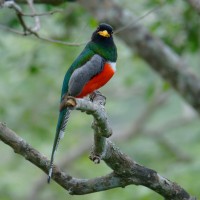 Arizona Monsoon Madness: Birding & Nature in a Season of Wonder!August 2 - 9, 2025
Arizona Monsoon Madness: Birding & Nature in a Season of Wonder!August 2 - 9, 2025 -
 Best of Belize Crooked Tree, Lamanai & Chan ChichOctober 18 - 26, 2025
Best of Belize Crooked Tree, Lamanai & Chan ChichOctober 18 - 26, 2025 -
 Guyana: Unspoiled WildernessNovember 6 - 18, 2025
Guyana: Unspoiled WildernessNovember 6 - 18, 2025 -
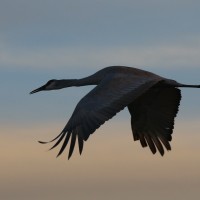 New Mexico Nature & CultureDecember 6 - 13, 2025
New Mexico Nature & CultureDecember 6 - 13, 2025 -
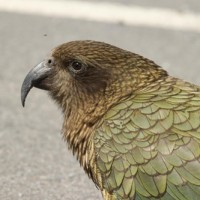 Birds & Nature of New ZealandJanuary 7 - 23, 2026
Birds & Nature of New ZealandJanuary 7 - 23, 2026 -
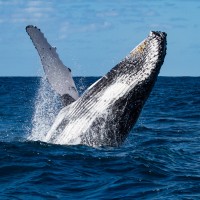 Southern California: Spring Coastal BirdingFebruary 16 - 23, 2026
Southern California: Spring Coastal BirdingFebruary 16 - 23, 2026 -
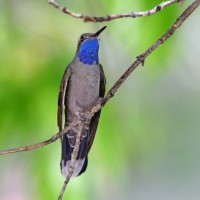 Southeast ArizonaApril 27 - May 6, 2026
Southeast ArizonaApril 27 - May 6, 2026
-
Essential Information +
Pace & Protocols +
Packing List +
Suggested Reading List +
Useful Links +
Photo credits: Banners: Elephants (Peg Abbott), Cheetah, Purple-banded Sunbird (Peg Abbott), Little Bee-eater (Peg Abbott), Zebra (Peg Abbott), Ngorongoro Crater Thumbnails by Peg Abbott: Saddle-billed Stork, Mangrove Kingfisher, Elephant, Zebra, Red-throated Bee-eater, Southern Ground Hornbill











